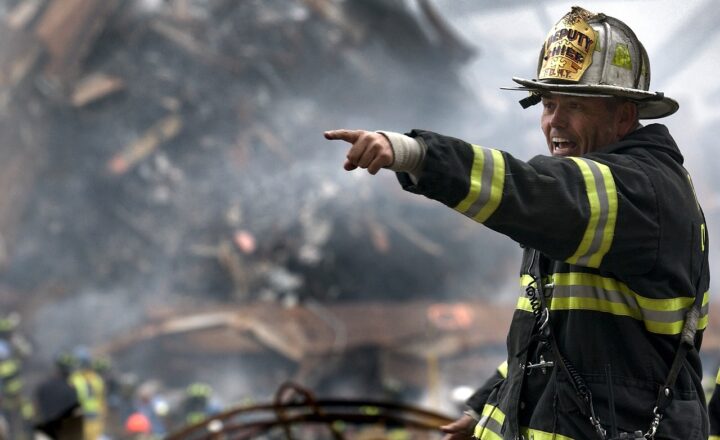Fire Safety Education: How Schools and Communities Teach Prevention Techniques
November 13, 2024

Fire safety is a critical aspect of ensuring the well-being of individuals in schools and communities. Each year, fire incidents result in countless injuries, fatalities, and significant property damage. Thus, educating the youth and community members about fire safety is not just important; it is essential. In this article, we will delve into the various methods and programs utilized by schools and communities to foster an understanding of fire prevention techniques.
1. The Importance of Fire Safety Education
Fire safety education serves as the first line of defense against fire hazards. Teaching individuals about the risks associated with fire helps them develop the skills needed to react appropriately in a crisis. Specifically:
- Awareness: Understanding what causes fires and how they spread can lead to preventive behaviors.
- Preparedness: Fire education courses often teach evacuation plans and how to use fire extinguishers, increasing people’s preparedness for emergencies.
- Safety Skills: Training helps instill crucial skills like how to alert others, exit a building quickly, and stay low to avoid smoke inhalation.
Research has shown that fire safety education significantly reduces the number of fire-related accidents, particularly among children and young adults. Schools and communities play an integral role in disseminating this knowledge.
2. Fire Safety Programs in Schools
Schools serve as a foundational environment for teaching fire safety. Many institutions have comprehensive fire safety curricula that engage students through interactive lessons and workshops:
- Fire Drills: Regular fire drills prepare students for effective evacuation. These drills familiarize students with the sound of fire alarms and the best escape routes, reinforcing the importance of remaining calm under pressure.
- Educational Workshops: Local fire departments often partner with schools to provide age-appropriate fire safety workshops. These sessions may involve demonstrations on how to use fire extinguishers or presentations about home escape plans.
- Curriculum Integration: Fire safety can be incorporated into other subjects such as science (understanding heat and combustion) or health (discussing the physical effects of smoke inhalation). This interdisciplinary approach helps solidify the importance of fire safety across various contexts.
Moreover, utilizing interactive games, videos, and role-playing activities enhances student engagement and retention of information, making learning about fire safety a memorable experience.
3. Community Fire Safety Initiatives
Communities play a pivotal role in promoting fire safety awareness and prevention. Here are some of the initiatives that have proven effective:
- Public Safety Campaigns: Local fire departments often conduct campaigns to raise awareness about fire hazards and safety measures. Flyers, billboards, social media, and community events all contribute to educating the public.
- Community Training Classes: Many communities offer free or low-cost training sessions that cover fire safety topics, what to do in case of a fire, and how to properly maintain smoke detectors and fire extinguishers.
- Home Safety Assessments: Some fire departments provide home safety assessments, where fire safety officers inspect homes for potential fire hazards and offer recommendations on how to mitigate risks.
Engaging the community not only raises awareness but also fosters a culture of safety, encouraging everyone to take responsibility for fire prevention.
4. Collaborations with Fire Departments
Collaborations between educational institutions and local fire departments enhance the efficiency and reach of fire safety education. Through partnerships, schools gain access to knowledgeable professionals who can deliver accurate and engaging instruction:
- Firefighter Visits: Firefighters can visit schools and community centers to demonstrate fire safety equipment, teach students about their roles, and share real-life experiences regarding fire safety.
- Fire Safety Fairs: Coordinated events that feature various fire safety exhibits, interactive demonstrations, and hands-on training sessions. These fairs create a friendly atmosphere where families feel encouraged to learn together.
- Engagement Through Media: Fire departments utilize social media, local news outlets, and websites to share safety tips, important reminders, and educational materials, reaching an even broader audience.
These partnerships lead to more effective training programs and emphasize the importance of collaboration in creating safer environments.
5. Tailoring Instruction to All Ages
Fire safety education cannot be one-size-fits-all. Tailoring instruction to different age groups ensures that the messages resonate effectively:
- Pre-School and Elementary: Focus on basic concepts like “stop, drop, and roll” and the sounds of alarms. Engaging stories and characters significantly enhance learning for younger audiences.
- Middle School and High School: Teens are taught more sophisticated concepts, such as understanding fire hazards, emergency response protocols, and hands-on training on using fire extinguishers.
- Adults and Parents: Fire safety education for adults often includes deeper discussions on fire prevention in the home, evacuation planning, and working with fire safety tools effectively, appealing to their concerns about family safety.
Adapting fire safety education to suit the audience ensures that the campaigns remain relevant and impactful.
6. Leveraging Technology in Fire Safety Education
Advancements in technology have made fire safety education more accessible and engaging:
- Interactive Apps and Games: Many organizations have developed mobile applications that allow users to learn fire safety information through interactive challenges and games.
- Virtual Reality (VR) Training: Some communities have embraced VR technology to simulate fire scenarios, teaching individuals how to react in a controlled environment.
- Online Educational Resources: Websites provide valuable information and downloadable materials for educators and parents to facilitate their own fire safety discussions or activities.
Utilizing technology not only caters to the younger generations who are deeply engaged with digital media, but it also enhances the overall learning experience.
Conclusion
Fire safety education is an ongoing effort that requires collaboration between schools, community organizations, and local fire departments. By providing effective training and engaging programs, we can equip individuals with the knowledge and skills necessary to prevent fires and respond effectively in emergencies. Ultimately, enhancing awareness will go a long way in reducing fire-related incidents, ensuring safer communities for future generations.
Through education, we not only empower individuals but also foster a collective commitment to fire safety that will echo through generations.







